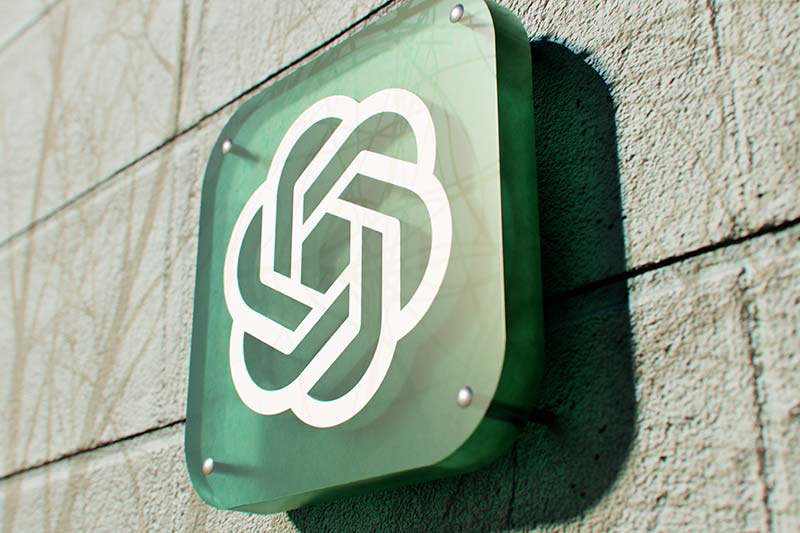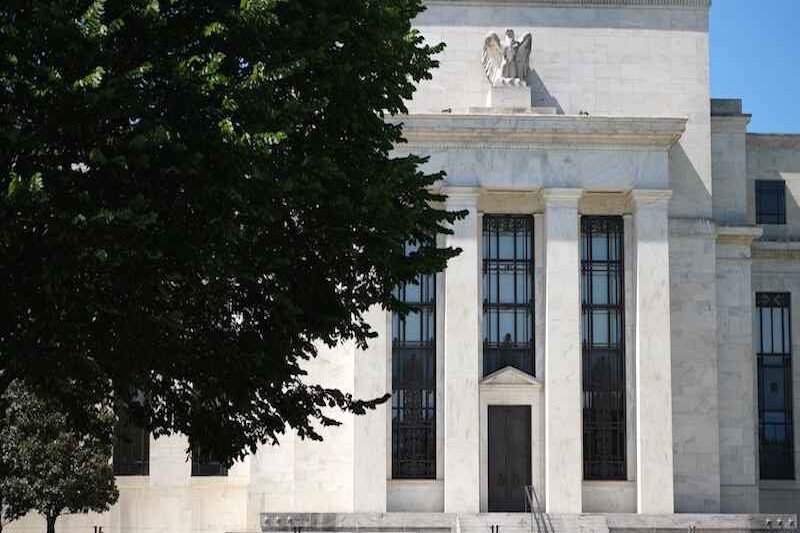Buy This, Not That: Big Bank Surprises
Shah Gilani|January 17, 2024
The big banks are reporting earnings… and things have been messy.
That’s why I’m diving into the banking sector in today’s Buy This, Not That…
Looking at the earnings reports from six of the biggest banks… including Morgan Stanley, Bank of America and Goldman Sachs…
Which ones are BUYS… and which ones are NOT?
Which ones can you get in and out of for quick gains?
It’s time for a reality check on the big banks.
Click on the image below to check it out.
Transcript
Hey, everybody. Shah Gilani here with your weekly BTNT, as in Buy This, Not That. I’m going to save you a lot of time because I’m going to be talking about the big banks today. Earnings are out on the big boys, and it’s time to talk about whether they’re a BUY or not here. So, like I said, I don’t want to waste a lot of your time. News flash… I’m going to make you wait… starting with Goldman Sachs, one of my favorite companies to dislike at times, “a great vampire squid,” as Matt Taibbi called it.
And what can I say about Goldman? Terrible. That’s what I can say, in a word. Yes, you can look at the 51% increase in profit in the fourth quarter. Golly. Wow. Yeah, blew away everyone’s expectations. But that great big profit comes on the heels of eight consecutive quarters of losses, of declines. Of declines in their profit. Not losses, but declines in profits. Eight consecutive quarters. So what, they hit it out of the park in the fourth quarter?
What’s interesting about hitting out of the park in the fourth quarter is, it didn’t come from its traditional sources of revenue, which is investment banking and trading, where it often hits it literally out of the park. No. They didn’t do well at all in the fourth quarter. Trading revenue was down 2.5%. This is the “meat and potatoes” of Goldman Sachs, really, what they’re great at. Down 2.5% in the fourth quarter?
They couldn’t trade their way out of a paper bag in the fourth quarter. If you didn’t switch up, if you had a bad October being on the wrong side of the bond market, you didn’t switch up. And then, as soon as November 1 rolled around and you had a heads-up from the U.S. Treasury as to why you cover any shorts and go massively long… and they didn’t do it… then they ended up with revenue down 2.5% in the trading book. That’s terrible.
Investment banking is down. Revenue’s down 12%. The only thing that saved them was the move into, the push into wealth management. And you know what? That doesn’t impress me. Because look at Morgan Stanley, which made that move, really, into wealth management and that stuff – 49% of Morgan Stanley’s revenue comes from that.
They were flat. So looking at Goldman Sachs… They had a whoop-de-do quarter because of their move and push into… they’re calling it wealth and asset management. That was up 23%, revenue there up 23%. So, good. So you’re a little late to the party there. And a lot of that was lending – lending to wealthy individuals, lending to hedge funds, lending to people who wanted to trade. But they probably, on the other side of those trades, lost money. Didn’t do well. Doesn’t work. Goldman Sachs doesn’t work, people. The stock has gone sideways for three years, with a lot of volatility. It’s not a BUY.
What you want to do with Goldman Sachs is, you want to buy it as a trade when it gets down to the bottom of its trading range and take your profits when it gets back to the top – a “reversion to the mean” trade. It’s a trade. It’s not a “buy and hold long” stock, people, and put it away. No. And it’s certainly not a “buy and hold” stock with its 2.91% forward dividend yield. Come on. Goldman Sachs… NOT. Trade it. All right? “Reversion to the mean” trading – that’s how you handle Goldman Sachs.
Next up… speaking of 49% of revenue coming from wealth management… Morgan Stanley. Also an earnings disappointment. Now, again, Goldman’s earnings were good because of that big 51% headline number. But just… back on getting on Goldman for another second… Besides the eight consecutive quarters of declining profitability, their year-over-year profits were down, people. Year-over-year profits… let me see if I can get you the exact number… down 24%. So yeah, the year is now totaled up, 2023. Goldman was down 24% from its profits in 2022. Really? Morgan Stanley… not much better, people. Not as bad as that, but certainly not good.
Morgan Stanley’s stock got hit on earnings, which saw fourth quarter profit down 32%. What? Come on, people. They were hurt by a lot of one-time charges. That’s where a lot of the banks – all the banks, really – [got hurt] because they had to take FDIC hits for charges that they had to pay into the FDIC pool in order to offset the losses FDIC experienced over SVB, Silicon Valley Bank, and Signature Bank… and the other losses they had in 2023. So FDIC hit them all with some pretty high charges, but they had other one-off charges at Morgan Stanley.
Wealth management, the bulk of their revenue, is flat, which is ridiculous. As far as that goes, flat. That’s your bread and butter, and it’s flat? They’re talking about now transitioning their clients to fee-based advice. I want to see how that’s going to go.
The stock is a kind of mirror of Goldman Sachs, people – three years of volatility and a lot of nothing. It’s a “reversion to the mean” trading instrument now. It’s not a BUY. Even when it gets low… unless there’s some kind of financial crisis and these things tumble… then you buy them because they’re too big to fail. But if they’re just going to go sideways like this, you buy them on their support lows and you trade them on the resistance highs. If they break out, you get a little extra juice out of it. But look to take profits when they hit the resistance if they fall back down.
It’s a “reversion to the mean” trade. It’s basically… you’re trading the volatility up and down. You’re buying the lows, you’re selling the highs and the volatility – because you’re going to get plenty of it in these banks. So, Morgan Stanley, is it a long-term buy? No. Certainly not for… The dividend’s decent, 3.79%, but you can get better than that in the money market, right? So no, no.
Next up, Bank of America, symbol BAC, of course. Quarterly, fourth quarter profit of $3.1 billion. Oh, that’s down from $7.1 billion a year ago. What is going on with the banks, people? Missed forecasts badly. Per share earnings came in at $0.35. The Street’s estimate was for $0.53 a share. Wow, that’s a big miss. It’s pretty darn ugly when you look at a year ago, and they made $0.85 a share. Wow, people. So Bank of America… NOT.
Yes, they had one-off charges… also trading around $32 now, dividend of 2.93%. That’s not a reason to buy them. Yeah, this is, again, another good stock to trade, people. Don’t buy and put it away. That would be a huge mistake. There are plenty of other stocks, companies, tech companies that aren’t going to be disrupted by fintech… which all the banks are going to be disintermediated by fintech companies coming up. So that’s going to continue to happen to them. So will you buy any of these down here? No, people. You trade them. You buy them on their lows, you trade them when they break out, and you look to take your profits. And boom, back and forth. That’s it. Bank of America, no, not worth it for the dividend just shy of 3%. It’s not worth it, people.
Yeah. Again, when these banks got really low back in 20… I think it was February of 2016, Bank of America got down to below $11. Then it got up to $50, I think three or four years later, I believe. Now, that’s a great trade. So you buy them when they get absolutely hammered under dire circumstances, and then you hold them and you ride them for some time because they’re too big to fail. But when things are going along and you don’t have those kinds of situations, they’re going to be volatile, and it’s a “reversion to the mean” trade as far as Bank of America.
Next up, Wells Fargo. Oh man, Wells Fargo. Years ago, I made a lot of money at Wells Fargo buying it on one of those lows and made more than 100% on it. So is it down there now? No, it’s going sideways again. It’s sloppy. Guess what? Yeah, it trades around between $35 and $50 this year, the last 52 weeks, I would say. Okay, so you can trade it up and down on those numbers. Buy it around $35, sell it when it gets around $50. See if it breaks out, of course. And if it doesn’t, if it turns back around, get out and take your profits. And you do the same thing.
Their stock got hit on a jump in the credit loss provisioning they had. So they set aside more money than the Street had expected… or expected, upcoming expected credit losses on consumer credit cards and on commercial real estate. That’s not a good look when you’re adding to your expected loss reserve for what you see coming down the road. In the earnings call, it talked about higher expected losses. Again, on those areas, they talked about their businesses, plural, being sensitive to rates. And their expectation for rates is they are not going to get a whole lot of help. They also warned about their net interest income for the rest of the year falling.
Would you buy Wells Fargo here, WFC? No. You’d be silly to. All right. I don’t care if it trades down. If it trades down, you buy it on some kind of nice support low and you look for a trade to sell it as it goes up, take some profits. It’s not a long-term, “put it in the drawer and don’t worry about it” stock to own. No, it’s not a buy here long term. It’s a trading instrument.
Now, Citigroup. What am I going to say about Citigroup? How about that they puked? Puked, absolutely horrible. Net loss of $1.8 billion in the quarter… just disappointed all around. They’re going through a, shall we call it, I’m going to call it a turnaround. They’re trying to simplify their different lines of business, and it’s a global bank. Citi is an absolutely great global bank, but it’s just a trading instrument right now, people. It’s not worth buying.
Buy it low, sell it high. Don’t put it away and not think about it… because you’re going to see it go up, you’re going to be really happy. And then, I don’t know, a couple months later, you’re going to look down and go, “What happened?” It’s going to go right back down. So Citi, trading stock.
Last but not least, JPMorgan Chase. All I can say about JPMorgan Chase is it’s the only bank I would own. If you want to own a bank, people, buy JPMorgan Chase, JPM, on dips. And that one you can hold. But even then, I really would rather put my capital elsewhere. But I certainly… if things took a hard tumble, JPMorgan Chase would be the bank I’d buy. If there was something devastating that happened across the financial sector and all the banks took a wicked hit, JPMorgan is the one I’d buy because that will be the one that bounces faster, higher than its competitors in a rebound. But really, there are other places, better places, to put your capital.
Sorry to say, but the banks, U.S. banks, have lost their luster for me. They’re great trading instruments, again, as they have been for some time. They have had their runs. Those days are over. They’re going to create problems for themselves. And that means they’re not a BUY, any of them. Trade them, people. That’s it for this week. Catch you next week. Cheers.

Shah Gilani
Shah Gilani is the Chief Investment Strategist of Manward Press. Shah is a sought-after market commentator… a former hedge fund manager… and a veteran of the Chicago Board of Options Exchange. He ran the futures and options division at the largest retail bank in Britain… and called the implosion of U.S. financial markets (AND the mega bull run that followed). Now at the helm of Manward, Shah is focused tightly on one goal: To do his part to make subscribers wealthier, happier and more free.



